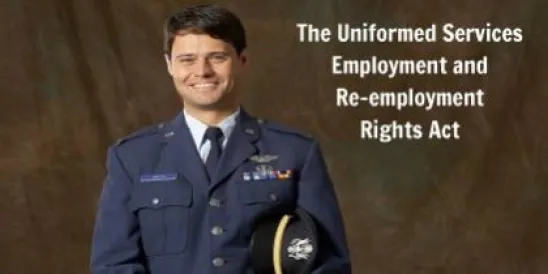While recent United States Department of Labor figures show the unemployment rate of veterans is trending below the national unemployment average, unemployment of younger veterans who have served since 9/11 still exceeds the national average. As such, the Department of Labor continues to focus on affirmative action requirements to promote veterans’ hiring. Federal contractors and subcontractors must ensure they are complying with their affirmative action obligations to employ veterans. Earlier this year, the Office of Federal Contract Compliance Programs (OFCCP) provided additional compliance guidance under the Vietnam Era Veterans Readjustment Assistance Act (VEVRAA), including what information contractors must solicit from protected veterans at the pre-offer and post-offer stages of the application process. In addition, OFCCP just released revised hiring benchmarks for veterans’ hiring.
Under VEVRAA regulations, contractors must invite candidates to self-identify as a protected veteran at both the pre-offer and post-offer stages of the application process. OFCCP requires this information so that contractors can track the number of protected veterans who apply for jobs and use this data to assess the effectiveness of their outreach and recruiting efforts. The pre-offer invitation to self-identify may be included in the contractors’ application materials. The regulations only require contractors to invite applicants to inform the contractor whether the applicant believes that he or she is a protected veteran. Practically, it is advisable to invite candidates to self-identify as a disabled veteran, recently separated veteran, active duty wartime or campaign badge veteran, or Armed Forces Service Medal veteran, so the contractor can determine if the applicant is a protected veteran under VEVRAA.
However, there is a change regarding post-offer invitations to self-identify. While contractors must still invite employees at the post-offer stage to self-identify as a protected veteran, employers need not ask the employee to identify which specific protected veteran category they belong to. The purpose of this change is that the new VETS-4212 form that contractors must file annually does not require contractors to provide information by the individual protected veteran categories. Under the new guidance, contractors now only have to invite employees at the post-offer stage to indicate whether they are protected veterans under any of the VEVRAA categories of protected veterans and not disclose any specific one.
In addition, OFCCP recently reduced the hiring benchmark for veterans from 7.2 percent to 7.0 percent, which is related to veterans availability in the workplace nationally. Contractors and subcontractors can use this revised target for their 2015 affirmative action plans. Alternatively, in lieu of using the 7.0 percent benchmark, contractors can establish their own hiring benchmark for their individual establishments. To establish an individualized hiring benchmark, contractors must consider certain factors such as the average percentage of veterans in the labor force of that specific area for the prior three-year period, the number of veterans seeking jobs through the state unemployment agency, and the most recent assessment of the contractor’s outreach and recruiting efforts.
Federal contractors and subcontractors would be well-served to review the new and changing specific recruiting and reporting obligations under VEVRAA.




 />i
/>i
